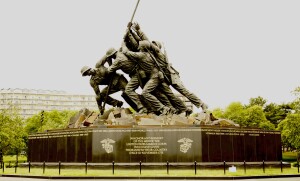1945 marked one of the most grueling and significant battles of World War II—the Battle of Iwo Jima. This small, volcanic island in the Pacific became the stage for a fierce and bloody confrontation between American and Japanese forces. As part of the U.S. strategy to capture strategic locations leading to Japan, Iwo Jima held immense tactical importance. Its airfields could serve as emergency landing sites for bombers and as a base for launching further operations against the Japanese mainland. However, what was initially estimated to be a relatively short battle turned into a brutal five-week struggle that tested the limits of endurance, strategy, and sheer willpower.
The Japanese defenders, deeply entrenched in a vast network of tunnels, bunkers, and fortified positions, fought with unwavering resolve. Unlike previous battles in the Pacific, where Japan relied on large-scale banzai charges, the defenders on Iwo Jima adopted a more deliberate, attritional defense. The Americans faced relentless machine-gun fire, artillery barrages, and the ever-present threat of hidden enemy soldiers in underground fortifications. Despite overwhelming naval and air support, U.S. Marines had to inch forward, clearing every position in deadly, close-quarters combat.
One of the most iconic moments of the war—and American history—occurred on February 23, 1945, when five Marines and a Navy corpsman raised the U.S. flag atop Mount Suribachi. Captured in an unforgettable photograph by Joe Rosenthal, the image became a symbol of courage, unity, and perseverance. Yet, while this moment signified a major morale boost, the battle was far from over. Fighting continued for weeks as Japanese forces, refusing to surrender, inflicted heavy casualties before being overwhelmed. By the end, nearly 7,000 American servicemen had lost their lives, and almost 20,000 Japanese defenders perished, with only a few hundred taken prisoner.
The significance of Iwo Jima extended beyond the battlefield. The battle underscored the immense cost of war and the determination of both sides. It also provided a grim preview of what an invasion of Japan might have entailed, influencing the decision to use atomic bombs later that year. Today, the island serves as a solemn reminder of the sacrifices made, with memorials honoring those who fought and died there. The legacy of Iwo Jima endures in history, not just as a tale of military strategy, but as a testament to human resilience in the face of unimaginable adversity.

